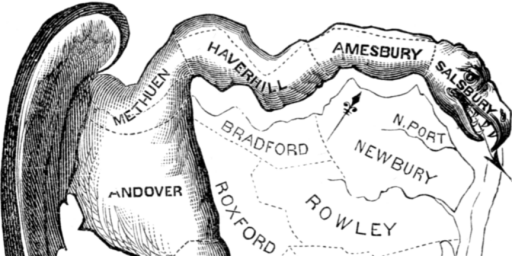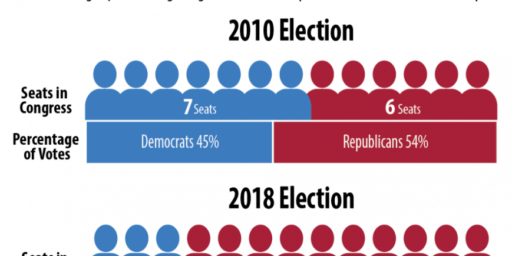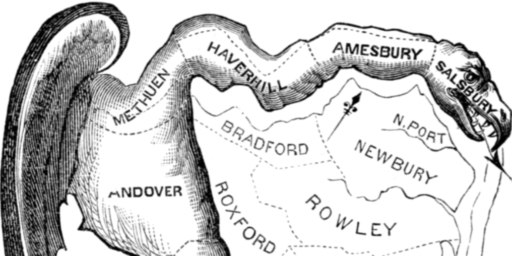REDISTRICTING AND THE COURTS
Stuart Taylor has a superb piece on gerrymandering and the unintended consequences of judicial policy-making.
Overshadowed by the December 10 decision upholding the McCain-Feingold campaign finance law was an important oral argument that morning over whether the Supreme Court should arrogate to itself vast new powers to redraw every congressional district in the nation. The goal would be to clean up the incumbent-entrenching, polarizing, gerrymandered mess that redistricting has become, or at least to strike down partisan gerrymanders so extreme as to mock majority rule.
The lawyers were too polite to tell the justices — who had just finished clucking at great length about the ickiness of campaign money — that the ickiness of gerrymandering is a mess mostly of their own making. The Court’s well-intended but clumsy interventions in the redistricting process over the past 40 years have destroyed the standards that had previously kept politically motivated manipulations of election-district lines within tolerable bounds.
After several paragraphs documenting the worst cases of partisan gerrymandering, he gets to the causes and consequences:
This practice has made it ever more difficult for changes in public opinion to affect the branch that the Framers designed to be most responsive to such changes. Only four members of the House — less than 1 percent — lost their seats in 2002 to challengers from the other party. The number of House races deemed competitive has plunged from about 150 in 1992 to an expected 35 next year. So the voters have no real say in the general elections in more than 90 percent of all House districts, because the results have been rigged in advance.
This has produced a House bitterly divided between the most liberal of Democrats and the most conservative of Republicans. They are unrepresentative of the nation’s largely centrist population because they need fear challenges only in primaries, which are dominated by their respective parties’ fiercest loyalists. Moderate centrists have almost disappeared from the House, and been replaced by partisans disinclined to make pragmatic compromises. Never before has “gerrymandering” — the word was inspired by Massachusetts Gov. Elbridge Gerry’s approval of a salamander-shaped district to help his party in 1811 — been taken to such extremes.
What brought us to this pass? The most familiar explanation is that modern computer technology allows line-drawers to use surgical precision in distributing likely Republican and Democratic voters among election districts in exactly the numbers desired. The more important explanation may be that the Supreme Court did it. Beginning with the “one-person, one-vote” rulings of the early 1960s [Most notably, Baker v. Carr in 1962. -ed.] , the justices have repeatedly intervened in the redistricting process, with the unintended but foreseeable consequence of destroying all of the rules, customs, and traditions that had restrained partisan and bipartisan gerrymanders alike. *** [T]he Court pretended against all evidence that the Fourteenth Amendment’s equal-protection clause had been designed to mandate precise equality in election-district populations. This absolutist approach, while easy for courts to administer, has led to such perverse extremes as the 1983 decision (in Karcher v. Daggett) striking down a New Jersey redistricting plan because of a difference of less than 1 percent between the most-populous and least-populous districts.
This “uncompromising emphasis on numerical equality” has served to “encourage and legitimate even the most outrageously partisan gerrymandering” — as Justice Lewis F. Powell Jr. predicted in his dissent — by requiring abandonment of traditional districting standards: city and county lines, compactness, contiguity, and natural and historical boundaries. Those had been the only brakes on incumbents’ power to gerrymander district lines for personal and partisan advantage.




